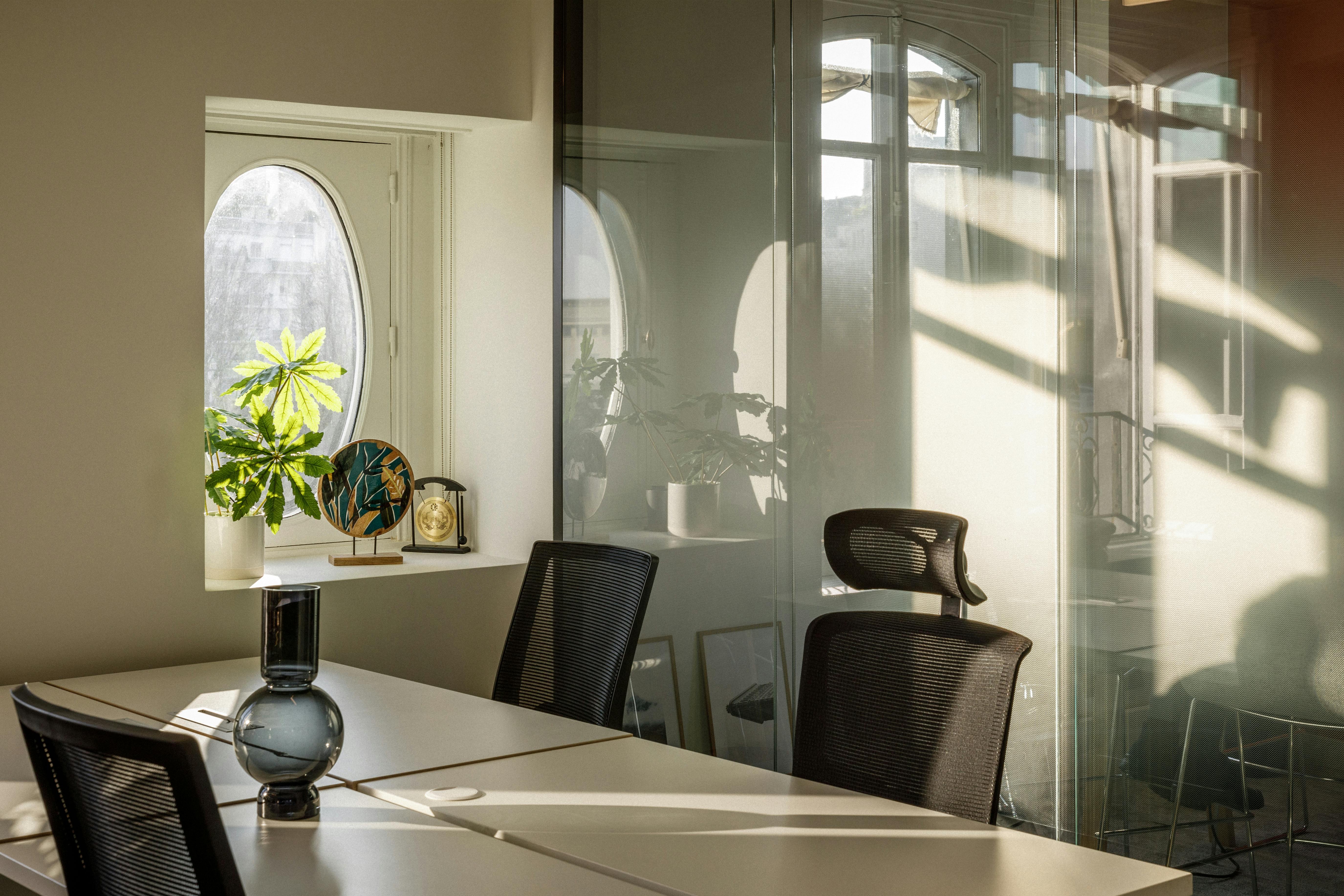

How to fit out a startup's offices?
Launching a start-up is a bit like laying the foundations for a project that has (almost) no limits. And in this equation, workspace plays a far more strategic role than you might imagine. It's not just a question of putting a few desks in an open space: you need to create an environment that supports the team's energy, reflects the company's values and accompanies the rapid, often unpredictable growth of a business in the making.
In this article, we give you the keys to designing start-up offices that match your ambitions. From layout to corporate culture, from furniture choices to new hybrid uses for the workstation, here's a concentrate of concrete insights to transform your premises into a real performance driver.
Why is office design strategic for a startup?
🧠 Read also: Why should every company have a workplace strategy?
In a startup, every decision counts, and the workplace is no exception. Here's why layout should never be relegated to second place:
- It influences team productivity and creativity.
- It shapes corporate culture from the very first months.
- It conditions the startup's attractiveness to talent.
- It helps anticipate organizational changes.
A good office layout is one that evolves with you, creating an environment where ideas can flourish, circulate and grow.
The main principles of a successful layout
Align the space with your vision
Ask yourself: What message do you want your offices to convey? If your DNA is based on innovation and collaboration, your workspaces must reflect it.
Create a balance between individual and collective
A common mistake? Relying 100% on open space. But startups need modular spaces: quiet zones, bubbles for concentration, but also informal corners conducive to spontaneous exchange.
Think UX from the outset
Just as you work on your products with a user-centric approach, apply the same reflex to your professional offices: fluid pathways, clear signage, intuitive furniture, natural lighting, etc.
Startup early-stage or scale-up: adapting space to your growth phase
Early-stage: agility first
- Shared office, coworking space or flexible equipped offices
- Shared meeting areas
👉 The early-stage phase often means a limited budget. In this context, it's best to opt for scalable, agile solutions. These formats provide functional, user-friendly space, without tying up cash unnecessarily, while keeping the option of easily adapting surface areas to your needs.
Scaling up: structuring & projection
- Need for dedicated meeting rooms
- Spaces differentiated by poles (tech, product, sales...)
- First investments in customized design
👉 A space must always remain modular to avoid becoming obsolete as soon as new recruits arrive.
Open space, partitioned spaces, hybrid zones: which configuration to choose?
There's no one-size-fits-all model. However, some configurations are more suitable than others:
| Type of space | Main advantages | Avoid if... |
|---|---|---|
| Open space | Promotes communication and cohesion | Frequent need for prolonged concentration |
| Partitioned spaces | Ideal for complex calls or tasks | Risk of isolation |
| Hybrid zones | Mix of communal spaces + quiet zones | Requires real UX thinking |
💡 Tip: Integrating a phonebox or acoustic booth right from the start, even for a small team, makes all the difference.
Flexibility, modularity and scalability: the essentials
Adaptability is one of the key words for successful startup office design.
- Modular professional office furniture (reconfigurable tables, removable partitions)
- Multi-purpose spaces (meeting, presentation, relaxation)
- Scalable infrastructures (connectivity, lighting, high-speed wifi)
🎯 Our aim is to enable you to transform your office space without the need for major renovation work, in line with each new stage in your growth.
How do you bring your corporate culture to life in the office?
Start-ups often have a strong culture. And that's an asset. To bring it to life on the shop floor:
- Create a clear visual identity (logo, colors, signage)
- Incorporate symbolic objects (prototypes, team boards...)
- Create a space for collective rituals (breakfast, stand-up, afterworks...)
👀 That's exactly what we did for the design of Kraken's new offices. Their visual universe was invited into every nook and cranny: colorful materials, playful mascots and nods to the brand right down to the layout of the rooms. And to reinforce the identity, the logo was discreetly integrated into the backgrounds so that it could appear during video conferences. A coherent, striking space fully aligned with their DNA.

Ergonomics, comfort and well-being: don't neglect the human factor
Employee comfort boosts productivity:
- Ergonomic, adjustable chairs adapted to prolonged posture
- Natural or indirect LED lighting
- Air quality, controlled acoustics, soothing plants
👉 These are not “bonuses” but profitable investments from the outset.
Practical advice to optimize your fit-out costs
📊 To go further: What budget should you set aside for your office fit-out?
Because a startup doesn't always have extensible means, here are a few ways to reconcile budget and design:
- Rent furniture instead of buying
- opt for ready-to-use equipped offices
- Start out in a shared or coworking space, with the option of customization
💡 Also think about regional subsidies or schemes to help innovative businesses set up.
Where does Deskeo fit in?
At Deskeo, we support startups of all sizes in the design of their offices, from strategic thinking to tailor-made implementation. The idea? To help you create a working environment that reflects your image, without ever locking you into a fixed format.
💬 Need a scalable space that sticks to your roadmap? Just contact us!


Contact Us
We find your Perfect fit!

